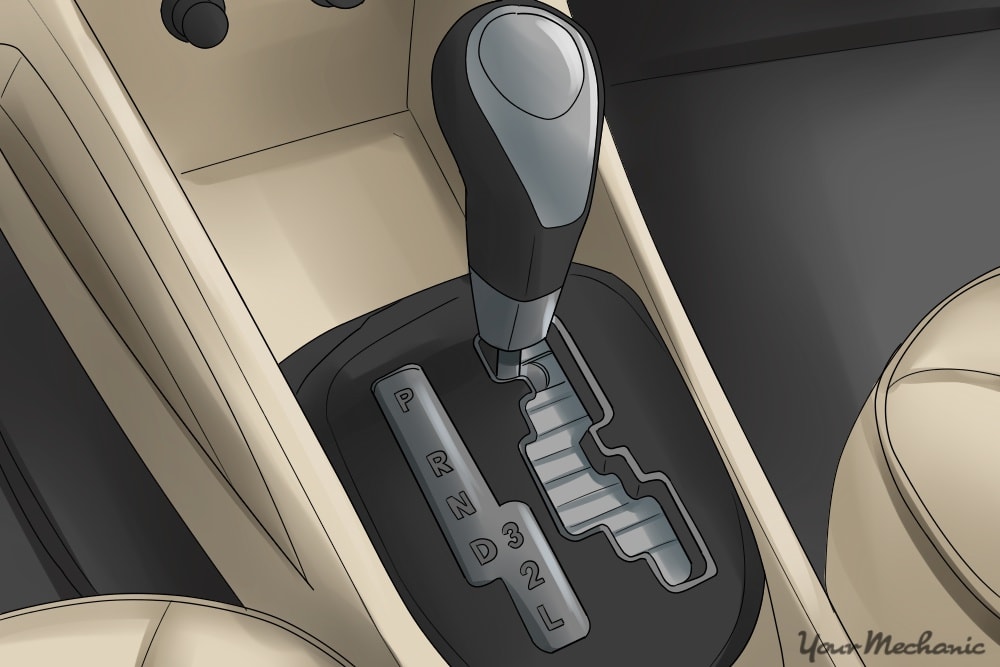

Have you ever wondered what those letters on an automatic transmission gear shifter mean? Well, you’re not alone. There are more than 10 million automatic-transmission operated vehicles in the United States alone sold each year. The automatic transmission is a reliable, hydraulically-operated system that applies the power coming from the engine to your drive wheels. Each letter or number listed on the transmission gear shift represents a unique setting or task for the transmission. Let’s dive into the automatic gear shift meaning so you’ll understand what each letter or number means.
Introducing PRINDLE
On most US and imported cars featuring an automatic transmission are a series of letters that spell out P – R – N – D – L. When you sound them out, it’s phonetically called “Prindle.” In fact, that’s what most engineers call the automatic gear shifter configuration, so it’s a technical term. Each letter stands for an individual setting within the automatic transmission. Depending on the type of vehicle you own, it’s also possible that you might see an “M” or a series of numbers — likely 1 through 3. To simplify things, we will break down each letter listed on most automatic transmissions.
What does the P mean on an Automatic Transmission?
The letters on an automatic transmission are often described as an individual “gear” setting, but that’s a bit misleading. It’s actually an activation setting. The gears inside an automatic transmission are hydraulically shifted and can range from three to nine speeds while in a forward ‘gear’.
The “P” on an automatic transmission stands for the PARK setting. When the gear shifter is in park, the transmission ‘gears’ are locked, which restricts the wheels from being able to spin forward or backward. Many people use the park setting as a brake, which is a primary purpose for this transmission setting. However, most vehicles also require the car to be started while the transmission is in the “PARK” setting for safety purposes.
What does the R mean on an Automatic Transmission?
The “R” stands for REVERSE, or the gear selected to drive the vehicle backward. When you shift the gear lever from P to R, the automatic transmission’s reverse gear is engaged — which spins the drive shaft backward, allowing the drive wheels to spin in ‘reverse’. A car can’t be started in reverse gear, as it would be very unsafe to do so.
What does the N mean on an Automatic Transmission?
The “N” is an indicator that your automatic transmission is in NEUTRAL or a free spinning mode. This setting releases the gear(s) (forward and reverse) and allows the tires to spin freely. Most people do not use the N setting unless their car engine will not start and they need to push it or have the vehicle towed.
What does the D mean on an Automatic Transmission?
The “D” stands for DRIVE. This is when the automatic transmission ‘gear’ is activated. As you accelerate, the drive gear will apply power to the wheels and progressively shift into higher ‘gears’ as the engine RPM reaches the desired level. As the vehicle begins to slow down, the automatic drive gear will down-shift to lower gears. The “D” is also commonly referred to as ‘overdrive.’ This is the top ‘gears’ setting on an automatic transmission. This gear is used on highways or when the vehicle is driving at the same RPM for extended road trips.
If your automatic transmission has a series of numbers after the “D” those are manual gear settings for the forward gear operation — with 1 being the lowest gear and larger numbers representing higher gears. They can be if your regular D gear isn’t working, and when going up and down steep hills to provide more engine braking.
- D1: Increases torque for difficult terrains like mud or sand.
- D2: Aids the car in uphill climbing, such as hilly roads, or provides a quick engine boost similar to its function on manual transmissions.
- D3: Sometimes shown as an OD (overdrive) button instead, D3 revs the engine for efficient overtaking. The overdrive gear ratio causes the tires to move faster than the engine spins.
What does the L mean on an Automatic Transmission?
The final common letter on an automatic transmission is the “L,” which indicates the transmission is in a low drive gear. Sometimes the “L” is replaced with the letter M, meaning the transmission is in a manual shifted option. This setting allows the driver to manually shift the transmission by using paddle shifters located on the steering wheel, or another action (usually to the left or right of the automatic gear lever). For those with L’s, it’s a setting used for climbing hills or trying to navigate poor road conditions — such as being stuck in snow or mud.
As each automatic car is unique, some of them will have different letters or numbers listed on the gear shift lever. It is recommended to read and review the vehicle owner’s manual (usually located in the glove box) to ensure you use the correct gear setting for the right application.



